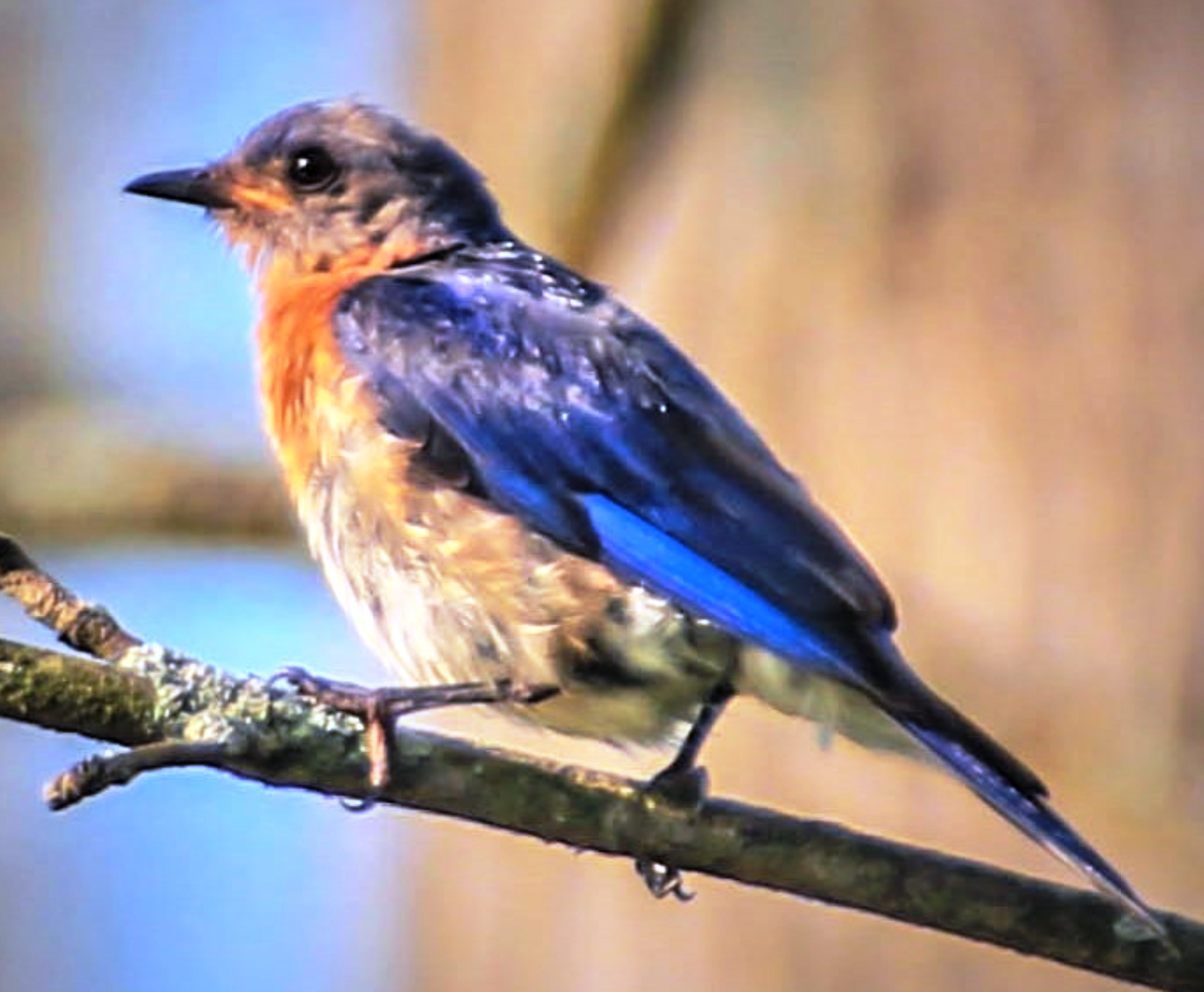The male Eastern Bluebird is a brilliant royal blue on the back and head and warm red-brown on the breast. The female is grayer with blue tinges in the wings and tail.
You can find them year-round here in the Finger Lakes. They perch on wires, posts, and low branches, scanning the ground for prey. They feed by dropping to the ground onto insects or, in fall and winter, by perching on fruiting trees to gulp down berries. You will not typically find them at bird feeders unless you offer mealworms.
Bluebirds commonly use nest boxes as well as old woodpecker holes. The boxes and tree cavities where bluebirds nest are a hot commodity among birds that require holes for nesting, and male bluebirds will attack other species they deem a threat, including House Sparrows, European Starlings, Tree Swallows, Carolina Chickadees, as well as non-cavity nesters such as robins and Blue Jays. I’ve witnessed lots of battles between the Bluebirds and Tree Swallows over the three boxes out in the meadow.
Cool Fact:
The male Eastern Bluebird displays at his nest cavity to attract a female. He brings nest material to the hole, goes in and out, and waves his wings while perched above it. That is pretty much his contribution to nest building; only the female Eastern Bluebird builds the nest and incubates the eggs.
Clutch Size: 2-7 eggs (pale blue in color), 1-3 Broods, incubation lasts for 11-19 days and the nestlings fledge within 17-21 days.
Information source: All About Birds
The top picture is a male bluebird and the bottom picture is a female bluebird.
Thank you to Helen Heizyk for sharing her knowledge and photography with us!

